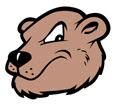 The Dow Theory, a market trend forecasting system developed in the late 19th century by WSJ editor Charles Dow, is close to signaling that the primary trend of the market, which has been up for five years, is down, or bearish, USA Today reported.
The Dow Theory, a market trend forecasting system developed in the late 19th century by WSJ editor Charles Dow, is close to signaling that the primary trend of the market, which has been up for five years, is down, or bearish, USA Today reported.
Chuck Carlson, contributing editor of Dow Theory Forecasts newsletter said that “the market is at a big inflection point.” According to Dow Theory, if the Dow industrial average (made up of companies that make goods) and the Dow transportation average (made up of companies that ship goods) both breach significant market levels, it confirms a trend change.
The transports are trading below their August low, when the credit scare first hit stocks. What is worrisome is that the industrials, after plunging 4.5% the past three sessions, are hovering less than 197 points, or 1.5%, above their August low. If the industrials close below their Aug. 16 low of 12,845.78, it would confirm that the market trend has turned bearish.
“Dow Theory looks at significant points on the downside and upside,” Carlson says. “If stocks breach those points, such as the dark period in August, it means something significant is going on. If both the industrials and transports are moving lower in tandem, it’s not good for the economy, profits or stocks.”
While I agree with this assessment, it also seems to go along with our Trend Tracking Indexes (TTIs) coming off their highs and subsequently triggering sell stops for a variety of our holdings. Again, just because a trend turns down, it does not mean that a return to bear market territory is imminent, although many fundamentals point in that direction.
As always, my preference is not to guess, but the let the actual numbers (and not the media) dictate my next move. If it turns out that this downturn was temporary’ and the main trend heads due north again, we will pick our entry points at that time. While this means that we will have to give up a little on the upside, we were well protected on the downside had it played out that way. That’s what let’s me sleep at night.
